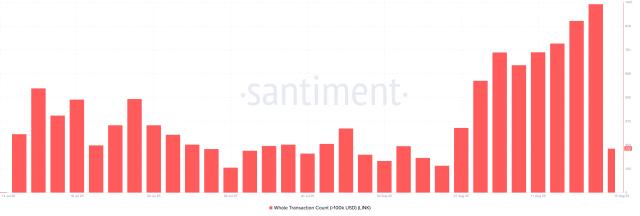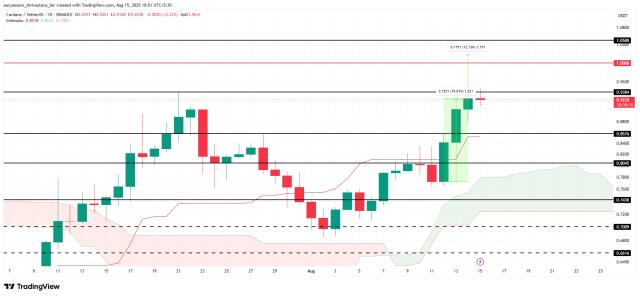Recently, the U.S. Senate passed a procedural motion for the GENIUS stablecoin bill, which quickly sparked widespread discussion in the market. Many scholars from traditional fields have raised sharp criticisms of this bill, even with obvious sarcasm. They compared this move to "desperate measures" and predicted that it would drag the United States into a new economic predicament. Overall, scholars' doubts are mainly focused on two key points:
First,the high yield of stablecoins essentially reflects the risk compensation in the crypto market and the DeFi sector's demand for leverage. Vigorously promoting the crypto market bubble to solve debt problems is tantamount to drinking poison to quench thirst, which may ultimately trigger a catastrophic financial crisis.
Second,stablecoins do not come out of thin air, and their issuance will inevitably lead to a migration of deposits from the banking system and money market funds. During this process, there might even be a decline in the broad money supply (M2) in the financial system. In comparison, encouraging banks and money market funds to increase their allocation to U.S. Treasury bonds might be a more rational strategy.
However, it is necessary to note that stablecoins, as a trading medium in the crypto market, are only a small part of their future demand. The true potential of stablecoins primarily comes from their reconstruction of the existing financial system, especially in the field of inclusive finance, where their demand potential remains far from being fully released.
First,according to World Bank data, approximately 1 billion people globally own mobile phones but do not have bank accounts. Due to high fees, backward financial infrastructure, and cumbersome procedures, people in these regions have long faced a lack of basic financial services. However, once blockchain-based stablecoins become widespread, this situation will fundamentally change—by simply connecting to the internet, ordinary people can enjoy low-cost, high-efficiency financial services. This will not only significantly improve residents' quality of life but also promote regional trade and business development, and optimize capital allocation efficiency.
Second,the traditional cross-border payment system has significant efficiency bottlenecks: not only are settlement cycles long and transaction fees high, but it also relies on multiple intermediary institutions to complete complex cross-border clearing processes. In comparison, stablecoin payments, through a disintermediated technical architecture, can achieve three breakthrough advantages: 1) bypassing the banking system, saving about 40-60% of intermediary costs; 2) 7×24-hour real-time settlement; 3) reducing transaction confirmation time from 2-5 days in the traditional system to minutes. McKinsey research shows that blockchain technology application in B2B cross-border settlement can reduce transaction costs by over 50%. This cost advantage is crucial for small and medium-sized cross-border traders—the previously compressed thin profits can now be transformed into significant competitive advantages.
Finally,in underdeveloped regions, due to exchange rate controls, people lack effective ways to hedge against inflation, with currency exchange being the most typical example. In many areas of Africa and Latin America, many people lose over 20% of their wealth annually due to currency depreciation. Meanwhile, they cannot invest in assets with higher credibility and better cost-effectiveness, such as U.S. stocks or U.S. Treasury bonds. However, with stablecoins, people in these regions can easily bypass exchange rate controls, convert their weak local currencies into higher-credit currencies, and even enter the RWA market through stablecoins to allocate assets like U.S. stocks, gold, and U.S. Treasury bonds.
In the long term,the crypto market's bull market primarily stems from the stablecoins' breaking-through effect. For example, the widespread promotion of stablecoins will transfer many financial activities to the blockchain, thereby driving the prosperity of the RWA market. During this process, some systemic important assets in the crypto market will inevitably undergo value reassessment, such as digital gold Bitcoin and Ethereum, the primary infrastructure for stablecoins.This is entirely different from many people's view that the GENIUS stablecoin bill stimulates the crypto market bubble to expand stablecoin demand and solve debt problems.
Regarding the second point,under the full collateralization model of U.S. dollar stablecoins using short-term U.S. Treasury bonds + cash equivalents (assuming 80% Treasury bonds + 20% cash), their monetary attributes are highly homogeneous with the U.S. dollar and can fully cover the main circulation functions of the U.S. dollar. This issuance mechanism essentially builds an automated U.S. Treasury bond acquisition channel: each issued dollar of stablecoin creates 0.8 dollars of U.S. Treasury bond allocation demand. In other words, during stablecoin issuance, market U.S. dollars not only continue to increase but the market's debt ceiling is also elevated.This phenomenon is similar to the situation in economics where demand deposits actually increase significantly when banks invest and lend, which is essentially credit expansion and liquidity creation. Therefore, during stablecoin issuance, M2 may not decrease but could potentially increase.
Moreover,many people overlook that USDT's promotion essentially imposes a seigniorage tax on global U.S. dollar users—enjoying the convenience of the U.S. dollar while accepting 0% interest U.S. Treasury bonds. Although the collateral's returns fall into the stablecoin issuer's pocket, the U.S. government is entirely capable of collecting high "compliance fees" from stablecoin issuers through market access, taxation, and regulation.In comparison, simply encouraging banks and money market funds to increase U.S. Treasury bond holdings can only temporarily alleviate selling pressure, facing a double dilemma: it cannot fundamentally resolve federal debt issues and may increase financial institutions' interest rate risk exposure.
Currently, many analyses still use the Libra assessment framework to interpret the GENIUS stablecoin bill, but the two are not on the same level. The strategic value of the GENIUS bill far exceeds the Libra proposal, mainly manifested in two aspects: first, the bill provides a clear legal basis for all PayFi projects, which helps systematically reduce compliance costs for innovative projects like Libra; more importantly, unlike Libra led by private enterprises, the GENIUS bill is driven by the federal government, with its strategic goal directly aimed at alleviating U.S. debt pressure and enhancing the U.S. dollar's penetration in offshore markets through institutional arrangements.
Of course,although the GENIUS stablecoin bill has made some progress in the Senate, it still faces many challenges before final passage into law, including improving the regulatory framework, coordinating interest conflicts, and unifying global compliance standards. Therefore, repeated negotiations are inevitable, and any variables could trigger significant market fluctuations.
In terms of the process, after the motion passes, the bill still needs a final vote in the Senate (if successfully passed, it will be sent to the House of Representatives for review). Next, the House will conduct committee review, full debate, and final voting. If the version passed by the House is consistent with the Senate's, it will enter the presidential signing procedure; if differences exist, it will need to go through inter-chamber coordination. If everything goes smoothly, the bill could be passed as early as August.
Currently, in terms of funding, the market remains highly optimistic about the GENIUS stablecoin bill. Despite Bitcoin setting a record of eight consecutive weekly gains, institutions show no fear of heights, with U.S. capital still rushing in. Even the president is personally "promoting" it—on May 26, Trump Media & Technology Group announced plans to raise $3 billion specifically for crypto investment.






